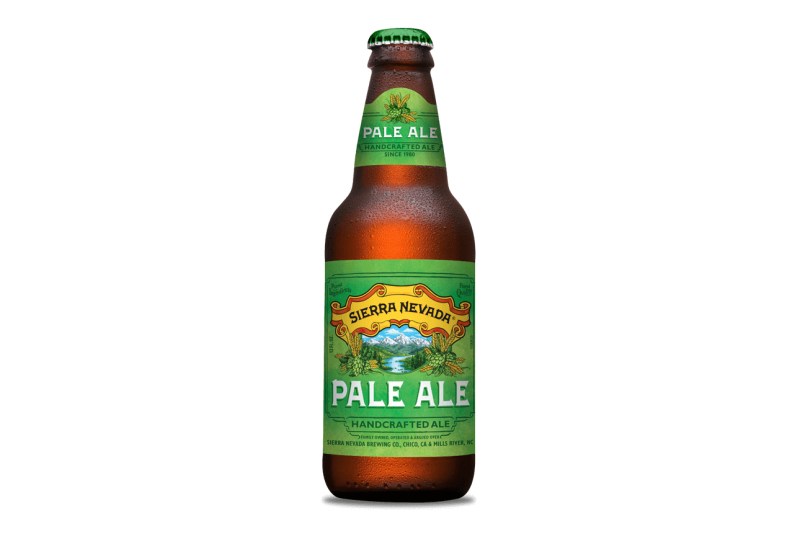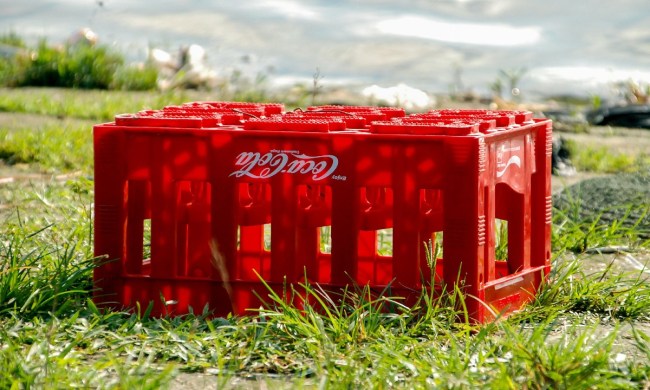Eating sustainably is challenging. In our intro guide to sustainable eating, we break down the high-level basics of starting the journey toward eating more sustainably. Reducing food waste and shopping locally are two easy ways to get started. However, what’s not so easy is figuring out what food brands are genuinely sustainable.
We all have busy lives, and researching every brand before we hit the grocery store is not practical for everyone. Also, food packaging doesn’t always do a great job highlighting a food manufacturer’s sustainability practices. To help us sort out what to look for in sustainable food companies, we reached out to Paul Lightfoot, Founder of BrightFarms, and creator of the Negative Foods Newsletter.

For a bit of background on Paul Lightfoot, he’s a man who’s had a passion for food all his life. Throughout college and grad school, he worked in the restaurant industry. In his thirties, he ran a software company that improved the supply chains of retailers after they became increasingly concerned with the U.S. food system. During this time, he became obsessed with foods that were better for your health and the environment. It spurred him to launch BrightFarms, which combined his career with his passion.
Lightfoot’s most recent obsession is his Negative Foods Newsletter. It’s a wealth of information on sustainable food and discusses how a food system based on carbon-negative foods can be a lever to reverse climate change. So, if your thirst for sustainable food knowledge isn’t quenched after this article, you should definitely check it out.
Sustainable Practices Food Brands Should Be Implementing
It’s clear that Lightfoot knows his stuff when it comes to sustainable foods, and those committed to sustainable eating should take his advice. Below are three things that he says truly sustainable food companies are doing and what consumers should be on the lookout for.
Adopt Carbon Labels
Carbon labeling made its debut last year in 2021 and essentially showed consumers the estimated amount of carbon emitted throughout the entire lifecycle of the product. That includes production, transportation, and disposal. There were a couple of early adopters last year, like Oatly and Just Salad. Lightfoot predicts that carbon labeling will hit the mainstream this year, and we’ll be seeing more brands adopt these labels as consumer demand increases.
“Growing consumer demand for Negative Foods will help reverse climate change. Inevitably, customers will prefer foods with improved carbon footprints. Brands must empower consumers to make informed choices on carbon footprints…Consumers need carbon labeling for Negative Foods to capture market share.”
Ensure Regenerative Agriculture Wherever Possible
Regenerative agriculture is not a new concept. Indigenous people used it for hundreds of years and still do. It’s essentially a holistic approach to farming that connects and improves the entire surrounding ecosystem.
It focuses on topsoil regeneration. This method minimizes the amount of topsoil lost in the farming process. In turn, less carbon is released into the atmosphere, the soil is more biodiverse, and more nutrient-rich foods can be grown. Big farming and its use of GMOs and pesticides result in more of a scorched-earth approach. Overall, a much less eco-friendly method.
“Food brands with regenerative supply chains don’t need to convince consumers to try new products; they just need to get consumers to switch to new versions of the same products they already enjoy, but with better environmental footprints.”
Pay Farmers to Sequester Carbon
Carbon sequestration is a process by which food growers and producers capture carbon and hold it, preventing it from escaping into the atmosphere. This can be done in a few different ways; biologically, geographically, or technologically. Lightfoot says there needs to be more investment in these practices.
“As more companies take steps to become carbon neutral, we need more investments in programs that sequester carbon … The rise of such programs will convince more farms to adopt regenerative practices.”
Food Brands That Are Getting it Right
The above are just a few things that Lightfoot thinks are essential for food companies to be considered sustainable. But, how do you know which brands are making an effort? Lightfoot lists seven brands that sustainable eaters should be supporting (outside of his own, of course).
Hickory Nut Gap
“The products come from a farm in Asheville, NC that is helping reverse climate change with regeneratively farmed beef.”
Sierra Nevada Beer
“I’m a big fan of Sierra Nevada, with their commitment to protecting the environment, and in particular, their long-standing efforts to protect American rivers. By capturing and reusing the naturally occurring CO2 from fermentation processes in their brewery, Sierra Nevada is dramatically reducing their emissions.”
Corto Olive Oil
“We don’t yet have precise data on modern olive cultivation in California, but Corto is investing in academic research to quantify the carbon impacts of their operation.”
Numi Organic Tea
“Numi was one of the first companies to be certified as a B Corporation and sells teas that are USDA certified Organic, and in most cases certified Fair Trade. The tea estates of Numi’s supply chain are regenerative agriculture operations; the growing activities draw down carbon from the atmosphere on a net basis. Numi will be printing carbon labels in 2022 on the bottom of each pack, breaking down total emissions for one teabag into categories.”
The Spare Food Co
“Founders Jeremy and Adam talk about ‘wasted food’ instead of ‘food waste.’ They’re working to unlock the enormous quantities of latent value in the food system. They see in wasted food ‘overlooked ingredients and untapped goodness,’ and make chef-crafted delicious foods from ingredients that were previously wasted.”
Biota (Coffee)
“Biota is committed to finding cost-effective tools for supply chain transparency.”
Philosopher Foods
“Philosopher is creating a market opportunity to incentivize almond producers to convert to regenerative practices.”
Keep Fighting the Good Fight
From food to fashion, making sustainable choices is never easy. Articles like this one can raise awareness and help point you in the right direction towards a sustainable brand. The fact that you read this means you’re on the right path. There’s a sustainable choice option for almost everything we buy, but finding that option is the hard part. It takes research and dedication. But the more people that make an effort, the greater number of sustainable products will emerge based on consumer demand.





